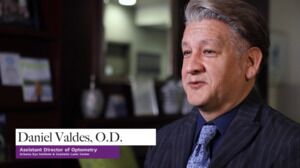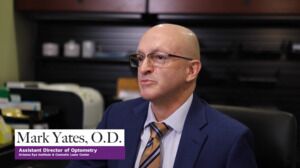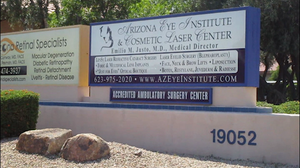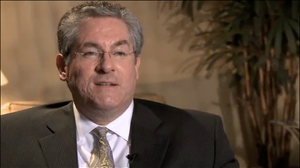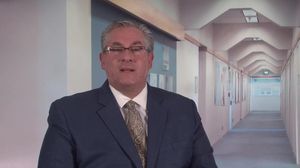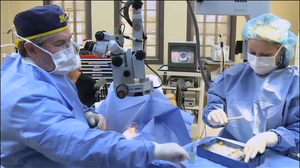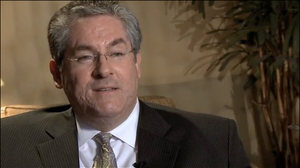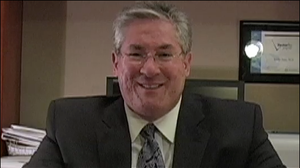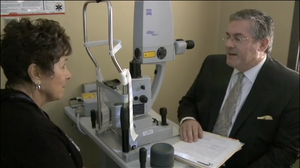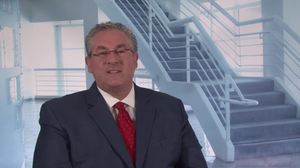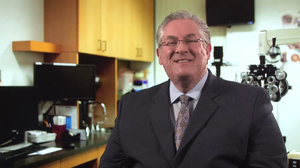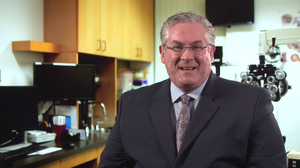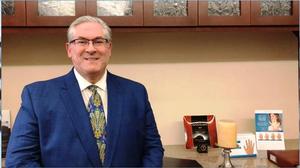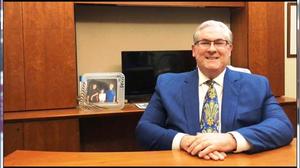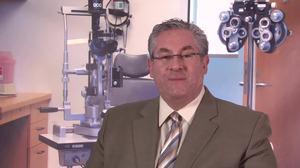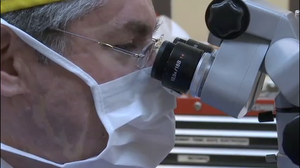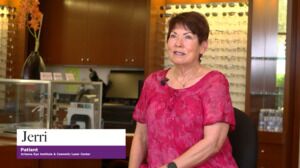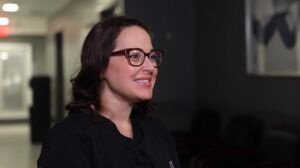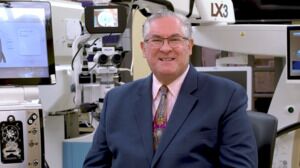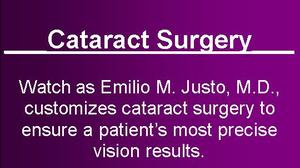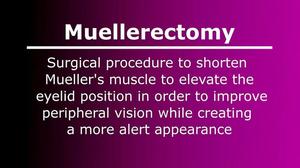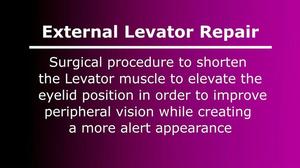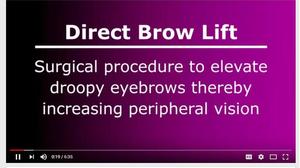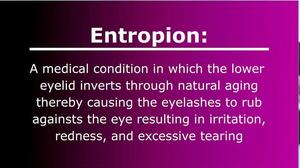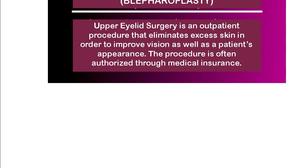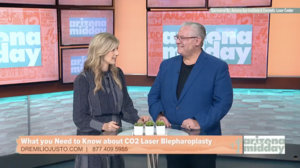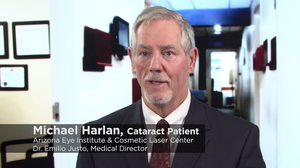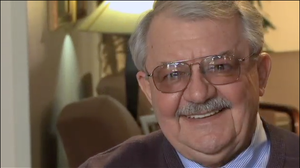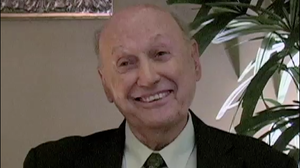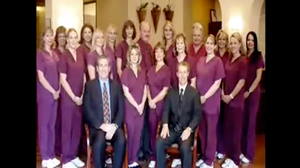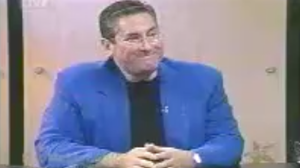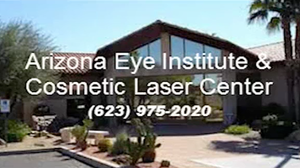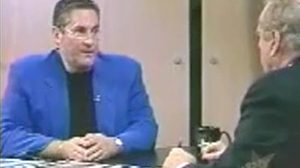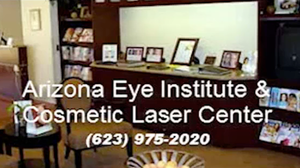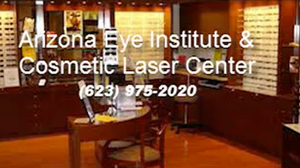Dr. Emilio M. Justo discusses cataract removal surgery. Being over 60 and having issues like diabetes can increase your risk of developing cataracts. Dr. Justo explains how the clouded lens is removed and replaced with an IOL. This implant can restore your vision and eliminate the need for glasses.
[00:00:09.560]
First, what is a cataract?
[00:00:11.880]
A cataract isn't a growth over the eyes as some people think that it is,
[00:00:16.920]
a cataract simply means that our lens, the lens being situated behind the pupil,
[00:00:23.720]
our lens, through natural aging, starts becoming clouded.
[00:00:28.200]
That process can actually start typically in the age of 60s and beyond,
[00:00:34.120]
and of course, as we get older,
[00:00:36.040]
the lens is likely to become more clouded.
[00:00:39.600]
There certainly can be other factors that can contribute to clouding
[00:00:43.320]
of the lens at an earlier age.
[00:00:45.880]
The most common, of course, being diabetic patients
[00:00:49.640]
and those individuals who take steroid medication.
[00:00:53.520]
But in general terms, let's keep it simple.
[00:00:56.360]
Let's talk about age-related cataracts.
[00:00:59.720]
In a cataract procedure, what we are doing is,
[00:01:03.600]
we're essentially removing that clouded lens from behind the pupil,
[00:01:07.880]
and then we're replacing it with a synthetic lens
[00:01:11.080]
called an Intraocular Lens Implant, also known as an IOL.
[00:01:16.640]
In modern day cataract surgery, everyone gets some type of lens implant,
[00:01:22.000]
because without a lens implant, it would take very, very thick
[00:01:26.520]
coke-bottle glasses to correct the vision.
[00:01:30.040]
Some of you may not be old enough to remember in the old days
[00:01:33.760]
when patients would have to wear very, very thick coke-bottle glasses
[00:01:38.560]
that had all sorts of side effects after cataract surgery.
[00:01:42.680]
Now with the advent of Intraocular Lens Implants,
[00:01:46.960]
cataract surgery has been revolutionized.
[00:01:49.680]
One of the things I'm very proud of in our practice
[00:01:53.000]
is that since day one,
[00:01:54.520]
we've made an investment
[00:01:56.480]
in the most advanced state-of-the-art technology,
[00:02:00.240]
which we'll talk about in a moment.
[00:02:01.760]
In cataract surgery,
[00:02:03.520]
the surgical procedure is performed one eye at a time,
[00:02:08.400]
unlike eyelid surgery where both eyelids are performed simultaneously.
[00:02:13.720]
On the day of the surgery, it is imperative
[00:02:16.800]
that someone drive you home.
[00:02:18.520]
The reason for that is that you will be given
[00:02:21.200]
some intravenous sedation for comfort.
[00:02:25.320]
It is not possible to drive yourself home, sorry.
[00:02:29.840]
Postoperatively,
[00:02:30.640]
the patient will be using some eyedrops
[00:02:33.080]
to help the healing process, prevent infection,
[00:02:36.680]
and allow the vision to clear.
[00:02:39.760]
It is very rare that I place physical restrictions
[00:02:43.760]
after cataract surgery insofar as bending, lifting, or exercise.
[00:02:49.880]
Now let's talk about some of the advanced technologies
[00:02:53.160]
that I commonly use during cataract surgery.
[00:02:57.200]
It is standard nowadays in modern day surgery
[00:03:00.640]
that the clouded lens or the cataract is removed via ultrasound
[00:03:06.360]
or what is known as phacoemulsification.
[00:03:10.600]
But prior to doing the ultrasound, many patients choose
[00:03:15.040]
to have what is known as the LenSx Femtosecond Laser.
[00:03:19.920]
This is a unique type of laser which helps in many different ways.
[00:03:24.880]
It makes a very clean and accurate surgical incision in the cornea.
[00:03:30.440]
It makes the opening in the cataract, called a capsule orexis,
[00:03:35.640]
and it also breaks up the cataract, making the ultrasound
[00:03:40.240]
or phacoemulsification smoother and a bit easier.
[00:03:45.280]
With this type of technology, there are certain parts of the procedure
[00:03:49.960]
that can be quite automated and quite precise
[00:03:53.920]
and aren't subject to the human hand.
[00:03:56.840]
However, contrary to what some patients might believe,
[00:04:00.960]
using the laser
[00:04:02.520]
does not mean that there are not manual components to the surgery.
[00:04:06.480]
There still are components where surgical dextarity
[00:04:10.720]
and surgical skill are necessary.
[00:04:12.920]
After the cataract has been removed,
[00:04:15.600]
one is going to insert some type of Intraocular Lens Implant.
[00:04:19.880]
Before doing so,
[00:04:21.720]
I like using ORA technology, O-R-A.
[00:04:25.680]
The ORA is a laser-guided measurement performed on the table,
[00:04:30.040]
which just takes a number of seconds
[00:04:32.800]
to calculate the appropriate lens implant power
[00:04:37.000]
to try to meet our post-operative goal
[00:04:40.760]
or target for the prescription of the eye for what's known as the refraction.
[00:04:46.800]
There are preoperative measurements that are done before surgery
[00:04:50.000]
which are very good.
[00:04:51.960]
However, the ORA technology takes it to a much higher level
[00:04:56.160]
with higher resolution
[00:04:58.120]
to have an increased statistical likelihood
[00:05:01.800]
of hitting our target.
[00:05:03.960]
I'm a firm believer in the ORA technology which we've offered for over a decade,
[00:05:09.040]
and I've seen outstanding results with it,
[00:05:12.320]
and I certainly recommend it to our patients.
[00:05:16.200]
In terms of selecting a lens implant,
[00:05:18.880]
one of the things that I will be talking to you
[00:05:21.760]
during your consultation
[00:05:23.520]
is some of the options that may exist.
[00:05:27.640]
Not all of these options exist for each patient
[00:05:31.160]
because one has to customize and individualize
[00:05:34.640]
based upon specific parameters of your eye,
[00:05:38.160]
based upon what other comorbid conditions.
[00:05:42.000]
What I mean by that is, do you have any other conditions
[00:05:45.880]
that could affect the outcome of the surgery?
[00:05:48.320]
Do you have pre-existing macular degeneration?
[00:05:51.720]
Do you have pre-existing glaucoma? Are there other pathologies of the retina?
[00:05:57.320]
These all play a role in selecting the proper type of lens implant.
[00:06:01.880]
The Basic or Standard Lens Implant
[00:06:04.680]
is what we refer to as a Fixed-Focus Implant.
[00:06:08.440]
That's an implant to get your best vision without glasses, either at distance,
[00:06:15.320]
which is what most people select,
[00:06:17.360]
but a few do select at near, to be near sighted,
[00:06:20.880]
meaning to be able to read up close without glasses.
[00:06:24.920]
But with a Fixed-Focus Implant,
[00:06:27.360]
definitely one is going to need glasses for at least one thing or the other.
[00:06:32.600]
If the implant is focused at distance, then you're going to need reading glasses.
[00:06:37.040]
If the implant is focused at near, then you're going to need driving glasses.
[00:06:41.560]
That's the Standard or Basic Implant.
[00:06:44.320]
However, over the last decade or two, there has been an advent
[00:06:49.000]
of what are called Advanced Technology Implants,
[00:06:53.000]
formerly known as Premium Implants,
[00:06:55.480]
but really the technology is outstanding.
[00:06:58.160]
One of the more common ones
[00:06:59.560]
that I've used since it was FDA approved in 1999
[00:07:05.720]
is the Toric Intraocular Lens implant.
[00:07:09.120]
What is a Toric Implant?
[00:07:11.440]
You may have heard the term astigmatism.
[00:07:14.240]
Astigmatism is not a medical condition.
[00:07:16.920]
Astigmatism is a function of the curvature of the front of the eye, the cornea,
[00:07:22.040]
not being spherical like a basketball.
[00:07:25.800]
If we use the exaggerated example of a football,
[00:07:30.040]
a football when you look at it from the nose,
[00:07:32.400]
is quite pointy.
[00:07:33.360]
When you look at it from the side, it's quite flat.
[00:07:36.600]
That difference in curvature
[00:07:38.760]
for an eyeball would be known as astigmatism.
[00:07:42.280]
With a Toric Lens Implant, what makes it unique
[00:07:45.760]
is that it has an astigmatism correction built into the implant,
[00:07:50.280]
which helps the vision tremendously postoperatively.
[00:07:53.920]
Some patients may ask, "So what? I have astigmatism.
[00:07:57.880]
Why bother with a Toric Implant?"
[00:08:00.960]
If we address the vision not only by removing the cataract,
[00:08:04.760]
but also by reducing or eliminating the astigmatism,
[00:08:09.200]
one can make the vision after surgery
[00:08:11.960]
even better in terms of quality and clarity.
[00:08:15.160]
Why not?
[00:08:16.840]
In our practice, 30% of all of my cataract surgeries
[00:08:21.520]
receive some toric lens implant because astigmatism is quite common.
[00:08:28.000]
What other types of advanced technology implants are there?
[00:08:31.920]
There are multifocal or extended depth of focus implants.
[00:08:36.560]
These are implants that can focus distance and near
[00:08:40.280]
or distance and intermediate,
[00:08:42.520]
and they can significantly reduce the need for glasses overall.
[00:08:48.400]
Of course, one can never guarantee for each and every patient
[00:08:52.360]
that he or she will never, ever need to use glasses again.
[00:08:56.640]
But if the goal is independence from glasses,
[00:09:00.120]
there are many options available that can really provide
[00:09:03.720]
a significant degree of independence from glasses
[00:09:07.320]
and in many cases, eliminate them altogether.
[00:09:10.760]
Again, during my examination and my consultation with you,
[00:09:15.400]
we will discuss these options,
[00:09:16.920]
and I will be very clear and honest with you
[00:09:18.320]
in terms of what options may be suitable for you,
[00:09:22.840]
and perhaps which options may not be suitable for you.
[00:09:26.280]
It's very important that we have the same goal,
[00:09:29.720]
and my job is to do my very, very best to satisfy your needs, goals,
[00:09:35.280]
and expectations,
[00:09:37.280]
but at the same time, keeping reality in mind.
[00:09:41.400]
Because although refractive cataract surgery
[00:09:44.280]
is very advanced
[00:09:46.280]
in the 21st century,
[00:09:48.400]
as with any surgery, nothing is perfect 100% of the time,
[00:09:53.000]
even though I try to achieve that level.
[00:09:58.040]
Thank you for listening.
[00:09:59.640]
I hope this has been informative and I look forward to seeing you soon.






